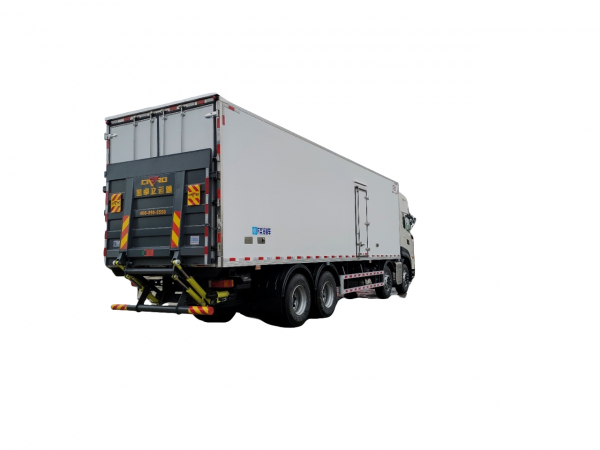The Powerhouse of Efficiency A Comprehensive Guide to Truck Mounted Crane Engines

Introduction:
Truck mounted cranes are essential equipment in various industries, providing the capability to lift and transport heavy loads with ease. At the heart of these powerful machines lies the engine, which serves as the powerhouse that drives the crane's operations. In this comprehensive guide, we will delve deep into the world of truck mounted crane engines, exploring their key components, functionalities, maintenance requirements, and the latest technological advancements shaping the industry.
1. Evolution of Truck Mounted Crane Engines
Truck mounted crane engines have come a long way since their inception, evolving to meet the increasing demands of modern construction, manufacturing, and logistics sectors. The earliest crane engines were predominantly powered by diesel, offering robust performance and fuel efficiency. Over the years, advancements in engine technology have led to the introduction of more efficient and environmentally friendly options, such as hybrid and electric engines, catering to the growing emphasis on sustainability in the industry.
2. Key Components of a Truck Mounted Crane Engine
A typical truck mounted crane engine comprises several essential components that work together to ensure optimal performance and reliability. These include the engine block, fuel system, cooling system, exhaust system, transmission, and electronic control unit (ECU). Each component plays a vital role in the overall functioning of the engine, from generating power to regulating fuel consumption and emissions.
3. Types of Engines Used in Truck Mounted Cranes
Truck mounted cranes are powered by various types of engines, each offering distinct advantages in terms of performance, fuel efficiency, and environmental impact. Common engine types include:
- Diesel Engines: Known for their durability and high torque output, diesel engines are a popular choice for truck mounted cranes due to their ability to handle heavy loads efficiently.
- Gasoline Engines: Gasoline engines are preferred for smaller cranes that require less power, offering a quieter operation and smoother acceleration compared to diesel engines.
- Hybrid Engines: Hybrid engines combine the benefits of internal combustion engines with electric motors, providing improved fuel economy and reduced emissions, making them an attractive option for environmentally conscious operators.
- Electric Engines: Electric engines are gaining popularity in the crane industry for their zero-emission operation and quiet performance, making them ideal for indoor applications and urban environments.
4. Performance and Efficiency Considerations
When selecting a truck mounted crane engine, performance and efficiency are key considerations that operators must take into account. Factors such as power output, torque, fuel consumption, and emissions play a crucial role in determining the overall efficiency of the engine. Modern engines are designed to deliver optimal performance while minimizing environmental impact, striking a balance between power and sustainability.
5. https://www.worktruckmaker.com and Care of Truck Mounted Crane Engines
Proper maintenance and care are essential for ensuring the longevity and performance of a truck mounted crane engine. Regular maintenance tasks include oil changes, filter replacements, coolant checks, and inspections of critical components such as belts, hoses, and electrical systems. By adhering to a comprehensive maintenance schedule, operators can prevent costly breakdowns and maximize the lifespan of their crane engine.
6. Technological Advancements in Truck Mounted Crane Engines
Advancements in engine technology have revolutionized the truck mounted crane industry, offering operators enhanced capabilities and efficiency. Some of the latest technological innovations in crane engines include:
- Variable Valve Timing (VVT): VVT technology allows for optimized engine performance by adjusting the timing of the intake and exhaust valves, improving fuel efficiency and power output.
- Direct Injection Systems: Direct injection systems deliver fuel directly into the combustion chamber, enhancing fuel atomization and combustion efficiency, resulting in improved power and reduced emissions.
- Engine Management Systems: Advanced engine management systems utilize sensors and onboard computers to monitor and optimize engine performance in real time, ensuring efficient operation under varying load conditions.
- Emission Control Technologies: Emission control technologies such as selective catalytic reduction (SCR) and diesel particulate filters (DPF) help reduce harmful exhaust emissions, making crane engines more environmentally friendly and compliant with stringent regulations.

7. Future Trends in Truck Mounted Crane Engines
Looking ahead, the future of truck mounted crane engines is poised for further innovation and advancement. Emerging trends such as electrification, autonomous operation, and predictive maintenance are expected to reshape the industry, offering operators enhanced efficiency, safety, and sustainability. As technology continues to evolve, truck mounted crane engines will play a pivotal role in driving the next generation of lifting and transportation solutions.
Conclusion:
Truck mounted crane engines are the powerhouse behind the efficient and reliable operation of these essential machines. From diesel to electric, these engines have evolved to meet the diverse needs of various industries, delivering high performance, fuel efficiency, and environmental sustainability. By understanding the key components, types, performance considerations, maintenance requirements, and technological advancements in truck mounted crane engines, operators can make informed decisions to optimize the performance and longevity of their equipment. As the industry continues to evolve, embracing the latest trends and innovations in engine technology will be essential for staying competitive and meeting the ever-changing demands of the market.
